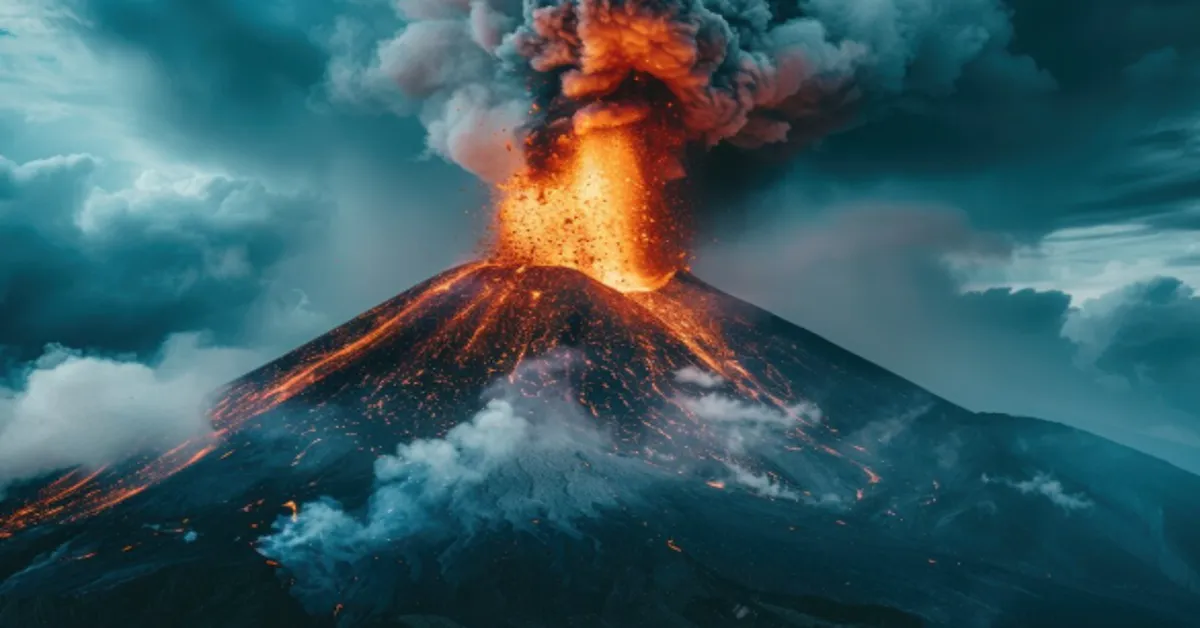At first glance, Mongibello Etna may appear to be a poetic phrase or an obscure geographic reference. In reality, it signifies the layered identity—both literal and cultural—of Mount Etna, Europe’s largest and most active volcano. The term “Mongibello” is an evocative name that has historically referred to the summit area or the broader volcanic complex itself. For centuries, local populations, poets, geologists, and mystics have used the term interchangeably with or distinct from “Etna,” revealing as much about human perception as about geology. This article dives deeply into the meaning, history, scientific relevance, and modern implications of Mongibello Etna, offering a full 360-degree perspective.
Understanding Mongibello Etna is to understand a fusion of science and myth, of language and lava, of cultural reverence and tectonic force.
What Is Mongibello Etna?
Mongibello is not a separate volcano but an ancient and regional name for Mount Etna, located on the eastern coast of Sicily, Italy. The word “Mongibello” itself is believed to be a linguistic hybrid of Latin and Arabic: “mons” (Latin for mountain) and “jebel” (Arabic for mountain), forming a tautological name that literally means “Mount Mountain.”
However, its usage extends beyond just nomenclature. Traditionally, Mongibello refers specifically to the double summit area of Etna, or to the volcano’s central craters, especially during periods of heightened volcanic activity. In some contexts, Mongibello is used poetically or mystically, representing Etna as a living, breathing entity—capable of both destruction and rebirth.
Etymological Origins of “Mongibello”
| Language | Word | Meaning |
|---|---|---|
| Latin | Mons | Mountain |
| Arabic | Jebel or Djebel | Mountain |
| Sicilian Dialect | Mungibeddu | Local pronunciation of Mongibello |
| Italian Literature | Mongibello | Traditional, poetic term for Etna |
This fusion reflects Sicily’s layered history—once a melting pot of Greek, Roman, Arab, Norman, and Spanish cultures. Each culture brought with it not just vocabulary, but perspectives on nature, deities, and the cosmos.
Mount Etna: A Geological Marvel
Mount Etna is one of the world’s most closely monitored volcanoes, largely due to its persistent activity and proximity to populated areas. It towers over the city of Catania and influences the climate, agriculture, and even the microeconomy of the region.
Basic Geological Stats:
| Feature | Detail |
|---|---|
| Height | Approx. 3,357 meters (varies due to eruptions) |
| Type | Stratovolcano |
| Last Major Eruption | Continuously active with frequent eruptions, most recent in 2023 |
| Tectonic Setting | Located at the collision zone between the African and Eurasian plates |
| Volcanic Activity | Strombolian, effusive, and explosive |
Mount Etna is considered a decade volcano, one of 16 volcanoes identified by the International Association of Volcanology and Chemistry of the Earth’s Interior as worthy of special study due to their history of large, destructive eruptions and proximity to population centers.
Mongibello in Myth and Literature
For the ancients, Mongibello was not just a volcano; it was the forge of the gods. In both Greek and Roman mythology, it was believed that Hephaestus (Vulcan, in Roman lore) had his workshop beneath Etna. The clanging of his hammer was said to echo through the rumbling earth during eruptions.
In medieval and Renaissance literature, Mongibello appears as a mystical place:
- In Dante Alighieri’s “Divine Comedy”, Mongibello is associated with volcanic hellscapes.
- Ludovico Ariosto, in his epic poem Orlando Furioso, uses Mongibello as the mythical location where enchanted arms are forged.
Even in modern literature, references to Mongibello evoke power, otherworldliness, and sublimity.
The Cultural Symbolism of Mongibello
Mongibello is not merely a geological feature but a cultural archetype. For Sicilians, the mountain represents:
- Fertility: Ash from eruptions replenishes the soil.
- Destruction and Renewal: Whole villages have been destroyed and rebuilt near the base of the volcano.
- Spiritual Duality: Seen as both divine and diabolical, calm and explosive.
Etna festivals, folklore, songs, and even cuisine reflect this reverence and tension. Mongibello is the emotional backdrop of a region that has learned to coexist with volatility.
Scientific Significance of Mongibello’s Activity
Scientists often refer to “Mongibello” when talking about central summit eruptions, especially those involving the South-East Crater Complex—the most active portion of Etna.
Monitoring Mongibello:
Etna is monitored using:
- Seismic sensors
- Thermal cameras
- Drones and satellite imagery
- Gas emission trackers
The Mongibello sector is particularly crucial because it’s where new vent formations and lava fountains tend to originate. This makes it the nucleus of change within Etna’s massive volcanic body.
Comparing Mongibello to Other Global Volcanoes
| Volcano | Country | Similarity to Mongibello Etna |
|---|---|---|
| Mount Fuji | Japan | Sacred status, iconic shape, stratovolcano structure |
| Kīlauea | USA (Hawai’i) | Continuous activity, close monitoring |
| Mount Vesuvius | Italy | Cultural and historical impact, potential danger |
| Nyiragongo | Congo | Rapid lava flows, high hazard potential |
While each of these volcanoes has distinct geological signatures, Mongibello Etna stands out for its intimate entanglement with human settlement, myth, and identity.
Mongibello’s Impact on Local Ecology and Economy
Etna’s ash and lava flows may seem destructive, but they are paradoxically essential to the vibrant ecology of the region. Volcanic minerals enrich the soil, allowing for the cultivation of:
- Grapes (Etna DOC wines)
- Citrus fruits (especially blood oranges)
- Olives and pistachios
Tourism is another major economic driver. Thousands visit each year to hike around Mongibello, ski on its slopes in winter, and witness controlled eruptions from a safe distance.
Economic Contributions:
| Sector | Impact |
|---|---|
| Agriculture | High-value crops on fertile volcanic soil |
| Tourism | Guided hikes, cable cars, and geological tours |
| Geothermal Research | Ongoing scientific studies attract grants and professionals |
| Local Crafts | Lava stone carvings, volcanic cosmetics, artisanal products |
Recent Eruption Events and the Mongibello Crater Complex
In recent years, Mongibello—particularly the South-East Crater—has produced spectacular lava fountains, with plumes reaching several kilometers into the sky. These eruptions often do not threaten lives but do disrupt air traffic and ash-sensitive agriculture.
A particularly notable event occurred in 2021 and again in early 2023 when Mongibello erupted more than 50 times in a single year. Despite these outbursts, the local population has adapted remarkably, showcasing resilience and deep geological literacy.
Mongibello and Climate Interactions
Volcanic activity in Mongibello can impact local and regional climate patterns. Ash plumes can lead to:
- Short-term cooling effects
- Altered precipitation patterns
- Enhanced cloud nucleation
Over longer timescales, such volcanic emissions help scientists model atmospheric changes, particularly in terms of aerosol behavior and carbon cycles.
Future Outlook: What Lies Ahead for Mongibello Etna?
With continued subduction of the African plate beneath the Eurasian plate, Etna’s future is one of constant transformation. The Mongibello summit is not a static geological structure; it rises, collapses, and reshapes periodically.
Predictive Models Suggest:
- Increased frequency of small eruptions
- Potential for flank instability (which could lead to partial collapse)
- Evolution of new craters near the Mongibello zone
However, improved monitoring technology gives scientists better tools to forecast eruptions, making long-term settlement around Etna more sustainable.
Educational and Experiential Tourism
The name Mongibello has become part of branding for eco-tourism and geological education. Visitors can now experience:
- Volcano trekking on Mongibello’s rim
- Lava tube explorations
- Astronomy nights on the volcanic slopes
- Museum exhibits explaining tectonics and myth side-by-side
Such initiatives blend science, adventure, and storytelling, making Mongibello a truly multidimensional travel experience.
Mongibello in the Digital Age
With the rise of remote sensing, citizen science, and real-time volcanic feeds, Mongibello has become more accessible—even to those who never set foot in Sicily. Live cams, drone footage, and VR experiences now offer virtual treks across the crater rim.
Educational platforms have begun integrating Mongibello case studies into climate science, geology, and mythology curricula.
Final Thoughts: The Meaning of Mongibello Today
To speak of Mongibello Etna is to speak not only of molten rock and tectonic forces, but of identity, language, history, and survival. Mongibello represents a volcano deeply entwined with the human imagination—an emblem of how nature and narrative coexist.
It is a place of awe and analysis, of danger and devotion. Whether viewed through the lens of science, mythology, or lived experience, Mongibello is a reminder of Earth’s restless beauty—and of humanity’s enduring need to name, narrate, and negotiate with the world’s rawest elements.
FAQs
1. What is the difference between Mongibello and Mount Etna?
Mongibello is a traditional name, often used to refer to the summit craters or the central area of Mount Etna. While Mount Etna is the official and scientific name of the volcano, Mongibello carries cultural, historical, and poetic significance, especially in Sicilian and literary contexts.
2. Why is the name Mongibello significant?
The name Mongibello is a fusion of Latin (“mons”) and Arabic (“jebel”), both meaning “mountain.” This tautological name reflects Sicily’s multicultural history and symbolizes the volcano’s layered identity—geological, mythological, and cultural.
3. Is Mongibello still active today?
Yes. Mongibello refers to the active summit area of Mount Etna, which remains one of the most active volcanoes in the world. The central craters regularly produce eruptions, with lava flows, ash clouds, and occasional seismic activity.
4. Can tourists visit Mongibello on Mount Etna?
Absolutely. Visitors can hike to Mongibello’s rim with a guide, explore volcanic caves, ride cable cars, and experience live geological features. The area is a popular destination for scientific tourism and eco-adventure travel.
5. What is the cultural meaning of Mongibello in Sicilian life?
Mongibello is more than a volcano to Sicilians—it’s a symbol of life, death, renewal, and resilience. It appears in folklore, music, religious festivals, and agriculture, shaping the island’s emotional and physical landscape.











